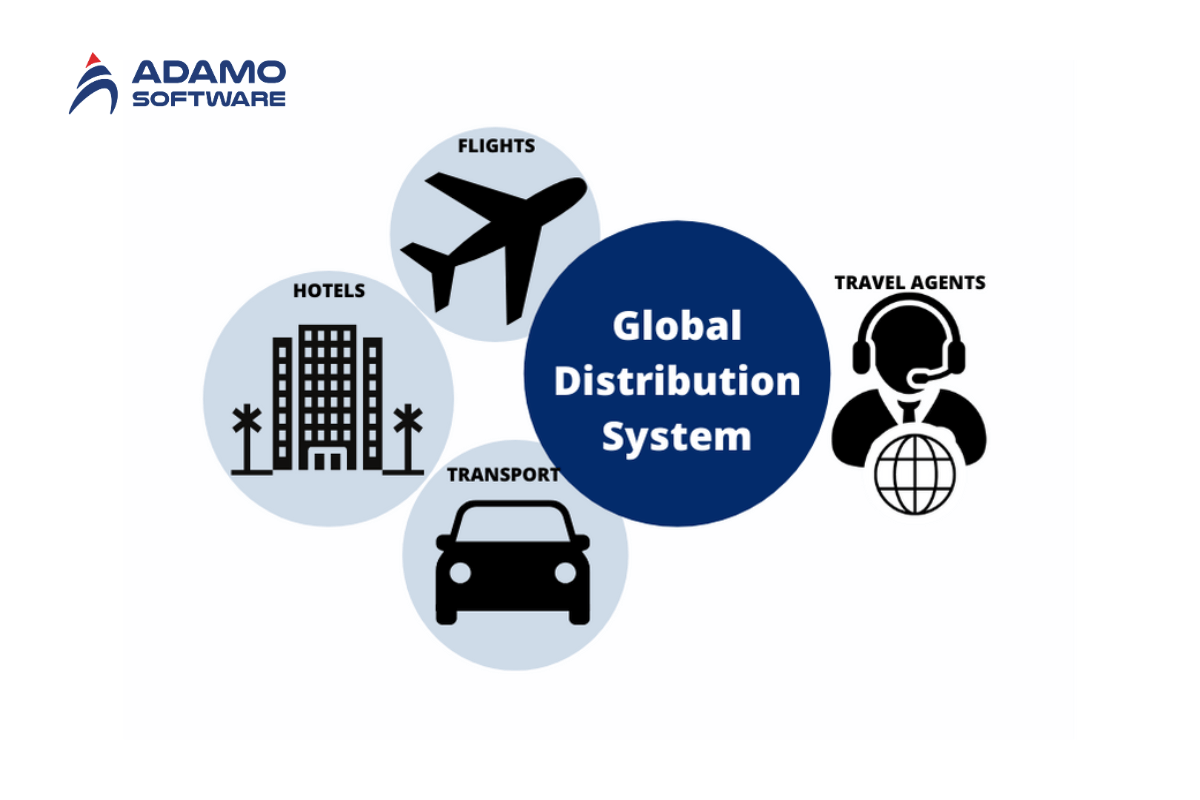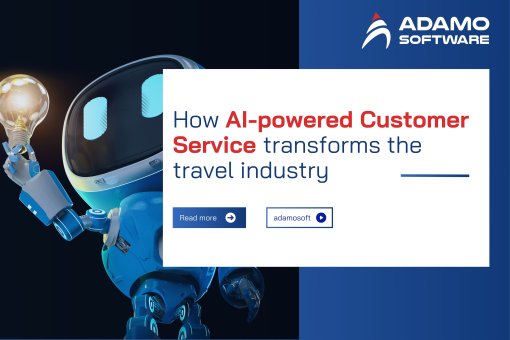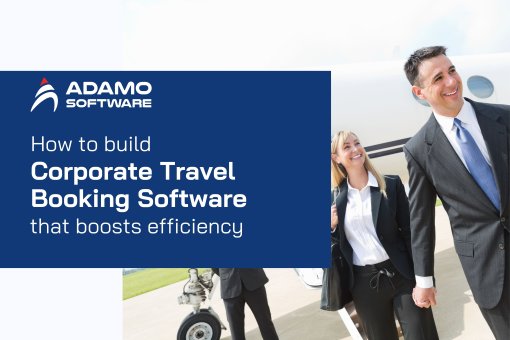GDS Integration: How to Integrate GDS API with Other Platforms

Complete guide for GDS integration, how to leverage GDS API to streamline operation. Compare top GDS providers to select the best one for GDS API integration
More and more people are booking their trips online. In 2023, the online travel industry generated $667.55 billion in revenue. According to the Trends Global Survey, 80% of global travelers feel it’s important to book their trips entirely online, with Millennials (86%) and Gen Zers (83%) leading the charge.
This shift is prompting travel businesses to optimize their online operations, and a key component in this effort is the travel API. Travel APIs are collections of web services that provide access to travel content from various sources, such as GDS, consolidators, wholesalers, and direct connections.
And GDS integration is one of the most important among these travel APIs as it allows travel agents and booking sites to reserve airline seats, hotels, vehicle rentals, and other travel-related services.
So, how do you integrate this powerful tool into your travel website? Here’s a complete guide. Now, let’s start with the basic.
I. What is GDS (Global Distribution System)
A global distribution system (GDS) connects reservation inventories into one computer-based network. It’s widely used in the tourism industry, mainly for airlines, hotels, and car rental companies. This way, travel agencies and online travel agencies can sell tickets for the same flight, hotel, or car rental.
GDS in travel also acts as a middleman between vendors like hotels and airlines, and service providers like online travel agencies. While most big GDSs are linked to major travel agencies, smaller and cheaper GDSs might connect to fewer travel agencies.
Travel businesses sign up and connect their inventory to a GDS integration. Once connected, users can use different portals associated with the GDS to buy from a vendor. This can prevent overbooking, also service providers can get real-time inventory updates from the airline or hotel.
Besides, travel companies can show their inventory and automatically update products and rates. This lets them use dynamic pricing, which instantly updates across all their portals.
Even with the rise of third-party online travel agencies (OTAs) like Booking.com and Expedia, GDS systems are still the top way to promote your hotel to the corporate travel market and attract travelers globally. You can discover how to connect GDS System from airlines to hotels here.

II. Key Features of GDS Integration
– B2B and B2C online booking portal
– Advanced flight booking engine
– Integrated CRM system
– Online payment gateway
– Promo code management for marketing
– B2C and B2B profile management: booking list, booking vouchers, cancelation – linked with bookings
– Post sale support: reschedule and cancelation
– Mid office system: booking management, front desk management, supplier management, service fee management
– Mobile application iOS and Android
III. GDS API Integration: Amadeus vs Sabre vs Travelport
Amadeus, Sabre, and Travelport are the best GDS in the travel industry. They provide access to a vast inventory, helping businesses boost their customers’ revenue.
1. Amadeus GDS Integration
Operating in over 190 countries, Amadeus is one of the world’s leading distribution systems.
It helps transform the travel industry with its extensive marketplace. Millions of travel suppliers and users rely on it for market planning, sales, and business processes.
Amadeus GDS makes it easy for travel agents, companies, and their customers to compare prices, book options, check schedules, and access inventories (like airlines, car rentals, hotels, holidays, and bus fares). Thanks to this feature, customers can book tickets online seamlessly.
What’s more, Amadeus offers a web service API that delivers Amadeus content through SOAP/XML messages. This service allows agents to integrate travel content into applications, such as booking engines, websites, travel agency front offices, and corporate self-booking tools.
Amadeus GDS helps travel agents and agencies enhance their business on a global level by enabling customers to get the best deals. It also helps manage travel businesses, reduce costs, and improve revenue.
When integrated into your reservation system, Amadeus GDS integration consolidates data like availability and prices. This cost-effective solution helps build and update your own booking options with comprehensive content.
_ Airline: Amadeus Airline offers IT solutions to streamline processes like transactions, booking, ticket reservations, inventory control, departure control, and e-commerce. It enhances the travel business by opening new profit streams, increasing efficiency, and supporting informed organizational decisions.
_ Hotel: The Amadeus hotel search API connects with various hotels and small chains, showcasing them in the top global distribution systems. It’s a crucial component for marketing hotel rooms and properties.
_ Car-rental: The Amadeus tool boosts rental vehicle sales. Its cars API is efficient and easy to implement, allowing car rental companies to reach multiple client segments through global multi-channel technologies.
2. Sabre GDS Integration
Sabre is a popular GDS for OTAs and travel management companies. With Sabre GDS, you can access a wide range of flight, hotel, car, rail, and cruise reservation systems.
Thousands of travel suppliers and users rely on Sabre for market planning, distribution, business operations, and more.
Integrating Sabre into your application or travel portal, consumers can browse and book from hundreds of airports, thousands of travel suppliers, holiday options, and car rentals to find the best choices.
Sabre delivers worldwide data, rates, inventory, deals, and real-time availability for airlines, hotels, car rentals, bus tickets, and more, making the travel industry more informative and sophisticated.
_ Airline: Sabre offers various data solutions to help airlines serve their customers efficiently and market themselves. It’s a cost-effective and efficient distribution channel that helps airlines reach leisure and corporate travelers.
_ Hotel: Sabre hotel GDS integration allows travel agents to quickly shop and book properties at the best prices from more than 175,000 locations worldwide. It provides comprehensive hotel content, reliable connectivity to suppliers, real-time availability of rates, room status, and quick reservation information.
_ Car-rental: Sabre’s GDS offers easy-to-use rental content and a sophisticated interface with real-time information. Travel companies can make their car rental bookings more efficient and reliable for both leisure and corporate travelers.
3. Travelport GDS Integration
Travelport GDS is one of the most advanced systems for travel agents and businesses, connecting travel inventory for hotels, flights, car rentals, holidays, and more.
With Travelport GDS integration, travel agencies can provide a wide range of airlines with great deals on seat availability, price changes, and flight status in real-time.
Travel agents use Travelport GDS to find the right airline tickets, car rentals, hotel rooms, and more for their customers, with personalized data based on criteria and itineraries.
_ Airline: With Travelport Airlines GDS, travel agencies and management companies can access enriched travel content for booking flights with real-time data and the best offers.
_ Hotel: Travelport hotel API is a powerful reservation system used by independent hoteliers, global chains, and boutique properties. It connects hotels with global travel agencies and corporate travel agencies in more than 180 countries.
_ Car-rental: Travelport’s car rental platform helps travel agencies and corporate travelers book various classes and categories of cars. It’s an excellent way for car rental suppliers to rent their fleets to global tour operators and corporate travelers.
IV. Step-by-Step Guide to Integrate GDS in Travel
GDS integration requires careful planning and execution. Here’s a breakdown of the key steps:

1. Choose the right GDS integration
Start by selecting the GDS that best fits your business needs. As we mentioned before, top GDS providers you can consider are Amadeus, Sabre, and Travelport. Each GDS has its own strengths, weaknesses, and coverage areas. Some may offer better inventory or rates for specific regions or segments, while others might provide more features like dynamic pricing, ancillary services, or rich content. Compare these options based on costs, benefits, and compatibility with your business model and target market.
2. Use a standard user interface
Next, use a standard interface to communicate with the GDS. A standard interface is a set of rules and protocols that ensure data is exchanged consistently and accurately between systems. The most common standard interface for GDS integration is the Open Travel Alliance (OTA) XML specification. OTA XML allows you to send and receive messages to and from the GDS using XML tags, facilitating requests for information such as availability, fares, booking, and ticketing.
3. Implement a middleware layer
The third step is Implementing a middleware layer between your platform and the GDS. This can simplify the integration process and enhance performance as the software component acts as a bridge, translating and validating data, caching and storing data to reduce requests, applying business logic to customize content and pricing, and managing the GDS connection for reliability and security.
4. Optimize user experience
Great user experience is important for converting and retaining customers. Remember to design an intuitive interface that makes it easy for users to search, compare, and book travel inventory from the GDS integration.
Besides, you should provide accurate information, such as images, descriptions, ratings, and reviews, to help users make informed decisions. Then, offer flexible options like filters, sorting, payment methods, and cancellation policies to meet users’ needs.
And don’t forget to ensure fast and reliable services, such as confirmation, notification, and support, to build user satisfaction and trust.
5. Update and maintain the GDS integration
Regular updates and maintenance enable you to keep your GDS integration functioning smoothly.
That’s why you need to follow the latest standards and specifications of the GDS and the standard interface:
– Test and debug the integration regularly to fix any issues and monitor its performance to optimize efficiency.
– Seek feedback from users and partners to continually improve the quality and value of your platform.
V. If Not GDS, Then What? Exploring Alternatives
Generally, GDS integration serve two main purposes:
– Helping travel agencies, OTAs, and TMCs cover all travel management needs.
– Providing a primary source of inventory for air flight distribution.
While GDS in travel is a great option for travel distribution, there are several other choices to keep in mind, depending on your requirements and specific goals. Here are some alternatives to consider:
1. Large OTAs
Expedia and Booking.com are powerhouses in the travel industry. They can offer significant distribution support to smaller businesses while taking their own profit from it.
– Expedia Group: With over 1 million properties across its subsidiaries, Expedia Partner Solutions and its REST-based Rapid API provide access to 700,000 global accommodations and 25 different property types. It also offers 29 million property images, 21 million room images, 82 million travel ratings, and 57 million reviews. User-generated content is updated daily and accessible via the API.
– Booking.com: Listing over 2 million properties, Booking.com’s affiliate program includes widgets, banners, search boxes, and more. Its Demand API supports XML and JSON formats, providing live rates, availability, hotel content, and booking processing capabilities. This API not only offers a wide variety of accommodations but also allows you to choose which options appear on your website and helps track your earnings.
2. Wholesalers
For many OTAs, wholesalers or bed banks are key sources of inventory. Major players like Hotelbeds offer high-level customer service, advanced APIs, large inventory, and market expansion opportunities.
In this model, a wholesaler contracts with a hotel to sell a set number of rooms at a fixed price for a specific period. These rooms are then sold to OTAs and TMCs. Hotels and wholesalers aim to keep rooms filled and often negotiate special rates.
3. Direct connection to providers
Direct connectivity to transport and hospitality providers is another viable option. Typically available via two-way API communication, this method allows data exchange between different systems. By avoiding middlemen, OTAs get more relevant and updated content, resulting in more competitive pricing.
VI. Why You Should Partner with Adamo for Your Travel App & Website Development?
As a premier software development company in Vietnam’s travel and hospitality industry, Adamo Software prioritizes quick market launches and cost-effective software solutions for SMEs and corporations. We also ensure easy allocation of human resources for software development projects.

We offer bespoke travel portal design, development, and web services integration with XML, GDS integration, and API. Additionally, we handle testing and project deployment to clients’ domains, maintaining technical aspects and providing customer support services.
Our agile travel and hospitality software development teams specialize in creating fully-featured travel portal solutions. These include hotel booking systems, car rental services, cruise bookings, holiday packages, hotel central reservation systems, and air and flight reservation bookings. Our solutions enhance easy-to-use app integration.
If you’re planning to build a custom travel portal for your business, contact us today.











